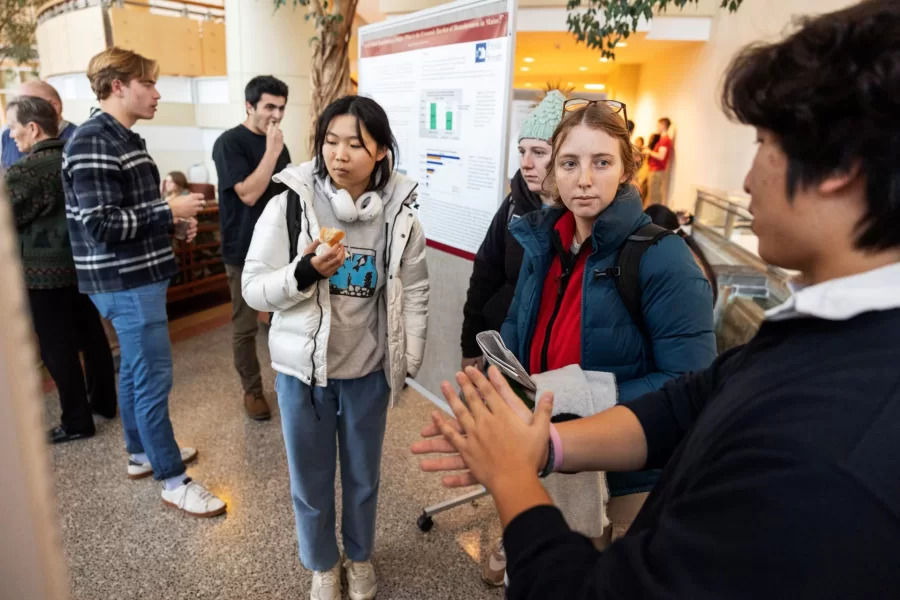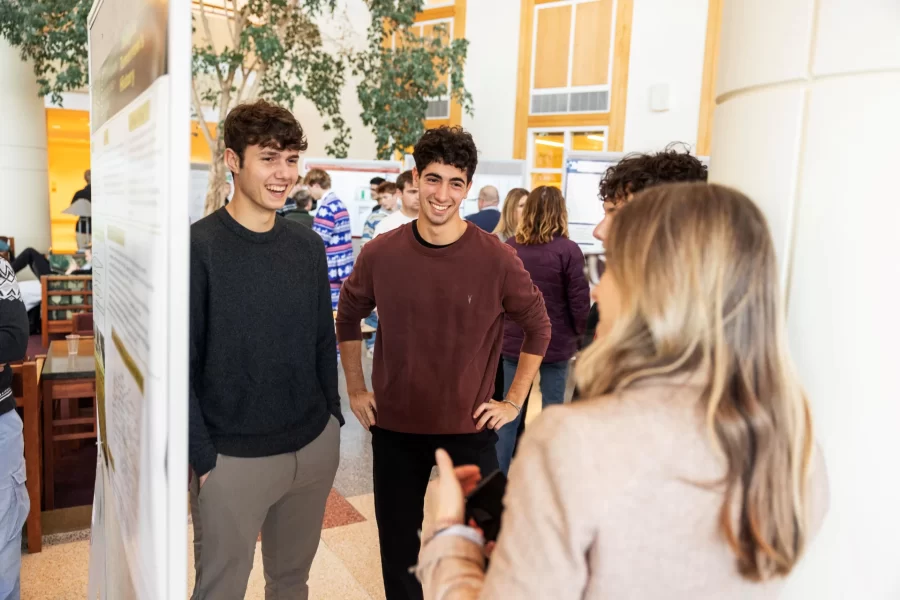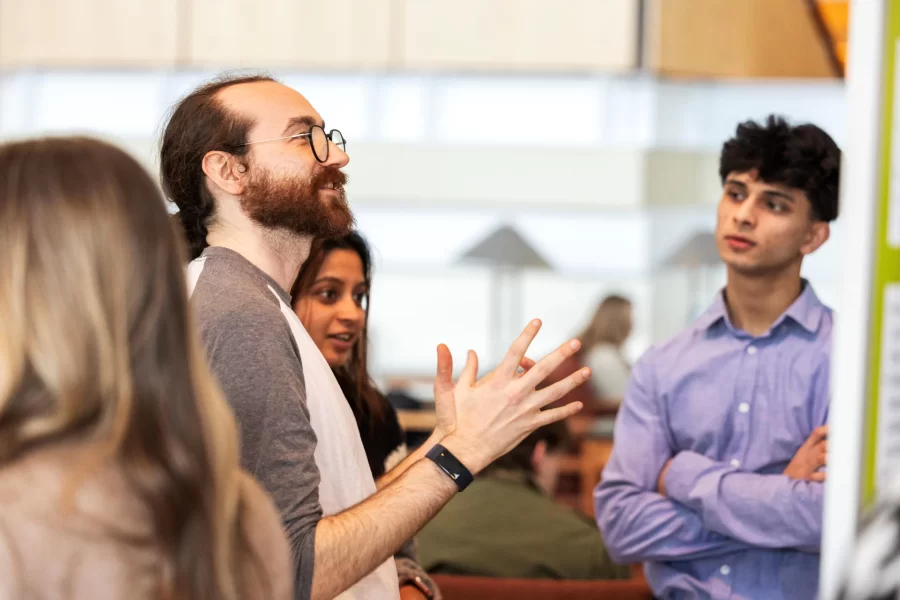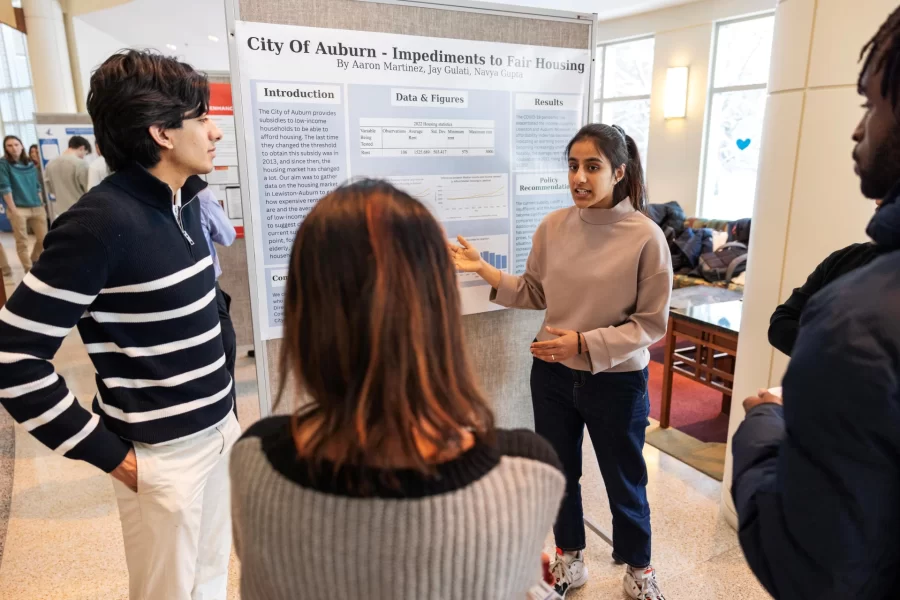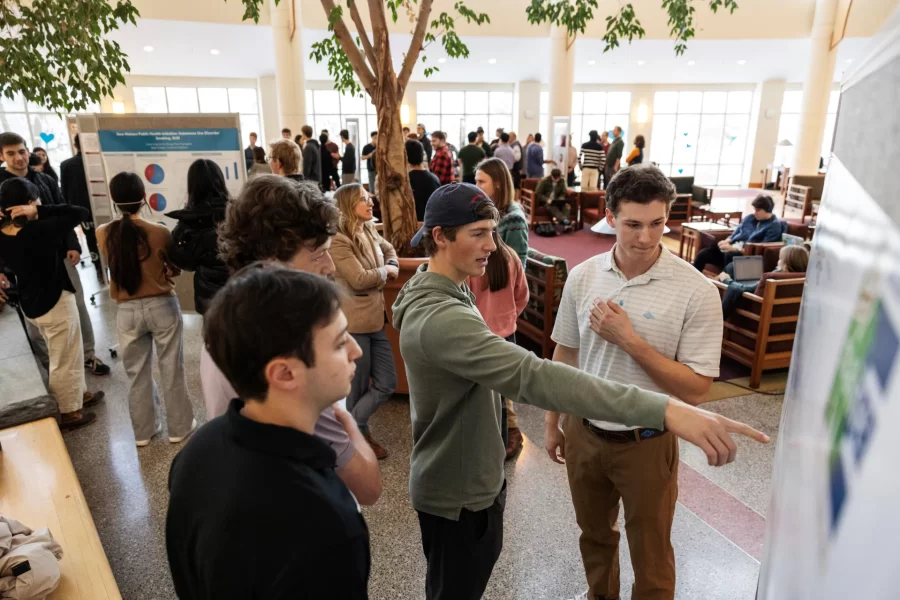Community-Engaged Learning: An Out-Of-This-Classroom Experience
As the college’s current-day mission statement reflects, a Bates education aspires to cultivate “intellectual discovery and informed civic action” as well as “responsible stewardship of the wider world.” One way this is done is through Community-Engaged Learning (CEL), with about half of all students taking a community-engaged learning course each year and many students undertaking community-engaged research projects and theses.
A class implementing CEL work this semester is ECON 250 Statistics, taught by Professor Sandra Goff. Mainly taken by Economics majors, the course provides a deep dive into statistics through economics-related questions. Sebastian Leal ‘26 of Ho-Ho-Kus, New Jersey explains, “Not only do we learn statistical concepts such as probability and hypothesis testing, we also learn how to use tools such as Excel and Stata to apply our statistics knowledge to data sets. While it is a course in the Economics department, the skills learned in the course apply to all disciplines, as every subject requires understanding data.” In addition to traditional statistics coursework, students also worked in 19 small project groups with 11 different community partner organizations. Sebastian, as well as Ellie Asada ‘26 and Axelle Tougouma ‘27, partnered with the City of Lewiston’s Economic and Community Development’s “Business Needs of New Mainers Program.”
The three were tasked with exploring possible ways of improving business longevity in the Tree Streets Neighborhood in downtown Lewiston by looking into how factors such as association with business groups and the type of business affect business longevity. This project is part of the City’s implementation of the Tree Streets Transformation Plan, which won a $30 million grant from HUD (Department of Housing and Urban Development) for the purpose of helping the community develop and thrive. Ellie Asada commented, “It’s a really eye-opening experience to witness first hand what it’s like to really work hard for your community and see it actually pay off. [It] has been a great opportunity to be able to apply what we learned to the real world–hearing [the City’s] experiences and reading their plan to help struggling businesses develop as well as create a more welcoming environment in Lewiston.” Axelle Tougouma noted that “being in touch with the community partner was amazing and made me more open-minded… Community partners made themselves available any time we had questions or directives toward achieving the project. They made important resources available for us to use, such as who to contact in order to collect data, which was really helpful for us to be able to achieve the project.”
Community-Engaged Learning is not just beneficial for the community partners, helping them pursue their goals and mission. It also provides real life experiences that the students would otherwise not be getting. Morgan Kinney of the Harward Center coordinates the CEL work of many classes and reminds us how in-class and out-of-class experiences can complement each other. Sebastian Leal resonated with this idea as he discussed how he and his peers “had to work together as a team and also use professional communication when working with the community partners. The ‘real life’ experience also put the content we learned in class into perspective, especially since statistics has many practical uses outside of the classroom.” Ellie Asada underscored this point, expressing that she is “thankful for the opportunity to apply our acquired knowledge to help these businesses grow.” And as Axelle Tougouma noted, “It was a growing experience for all of us. From coordinating details with our community partners, organizing weekly meetings and project reports, and being responsible for a whole project that may represent our future career, we gained a sense of leadership with this project. We also developed the ability to work as a group and harmonize discussions with respect and consideration.”
CEL work ranges from class to class. It can mean going to local elementary schools for “Perspectives on Education,” responding to essays of incarcerated people as part of “Contemporary Social Problems,” or the aforementioned work done in “Economics Statistics.” However, the common theme remains that CEL is an invaluable opportunity to not only collaborate with the local Lewiston community, but also gain out of classroom experience that many students at other schools do not receive. Through the Harward Center, Bates students, faculty, and staff enact the college’s civic mission through reciprocal and sustained partnerships by undertaking CEL work that connects the college’s members and the community in mutually beneficial and transformative ways.
